Indonesia 2004 "Museums of Indonesia"
| <prev | back to index | next> |
| Issue Date | 29.02.2004 |
| ID | Michel: 2348-2351; Scott: 2057a-d; Stanley Gibbons: 2963-2967; Yvert et Tellier: 2068-2071; Category: pF |
| Design |
Designer of stamps: Arcom Designer of FDC: Tata Sugiarta |
| Stamps in set | 4 |
| Value |
1500 IDR - Transportation (Ships & Navigation) (Sailing ships) - Museum Bahari, Jakarta 1500 IDR - Minerology & Geology - Geological Museum, Bandung (Fossil Hippopotamus) 1500 IDR - Telecommunications - Museum Telekomunikasi, Jakarta 1500 IDR - Mankind, Fine Arts - Museum Sri Baduga, Bandung |
| Emission/Type | commemorative |
| Issue places | Bandung |
| Size (width x height) | 42 x 24mm |
| Layout | Sheet of 20 |
| Products | FDC x1 |
| Paper | |
| Perforation | 13.50 x 12,75 |
| Print Technique | Offset lithography |
| Printed by | AMG Security Printing |
| Quantity | |
| Issuing Authority | Directorate General of Post and Telecommunication |
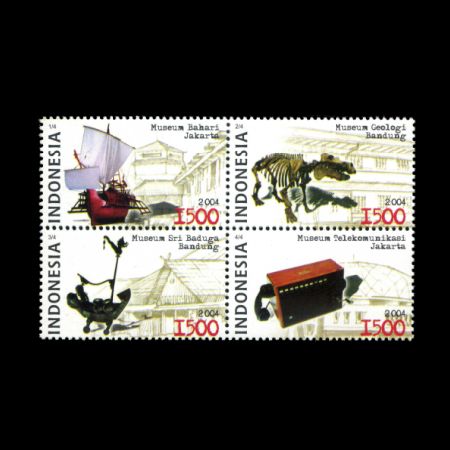
On February 29th, 2004, the Post Authority of Indonesia issued the set of four stamps "Museums of Indonesia". These stamps show some exhibits from various museums of Indonesia. One of the stamps is dedicated to the Bandung Geology Museum and shows a fossil of a Hippopotamus.
The Bandung Geology Museum is the biggest and most complete museum in Indonesia of its kind. This Museum was founded on 16 May 1928 as a geological center, by the Dutch colonial Authority to store collected rocks, minerals and fossils.
This museum was renovated to its current look during 1999-2000, funded by JICA (Japan International Corporation Agency).
The museum is divided into three exhibitions:
- Geology of Indonesia in the West wing
- History of Life in the East wing
- Geology for Human Life on the top floor
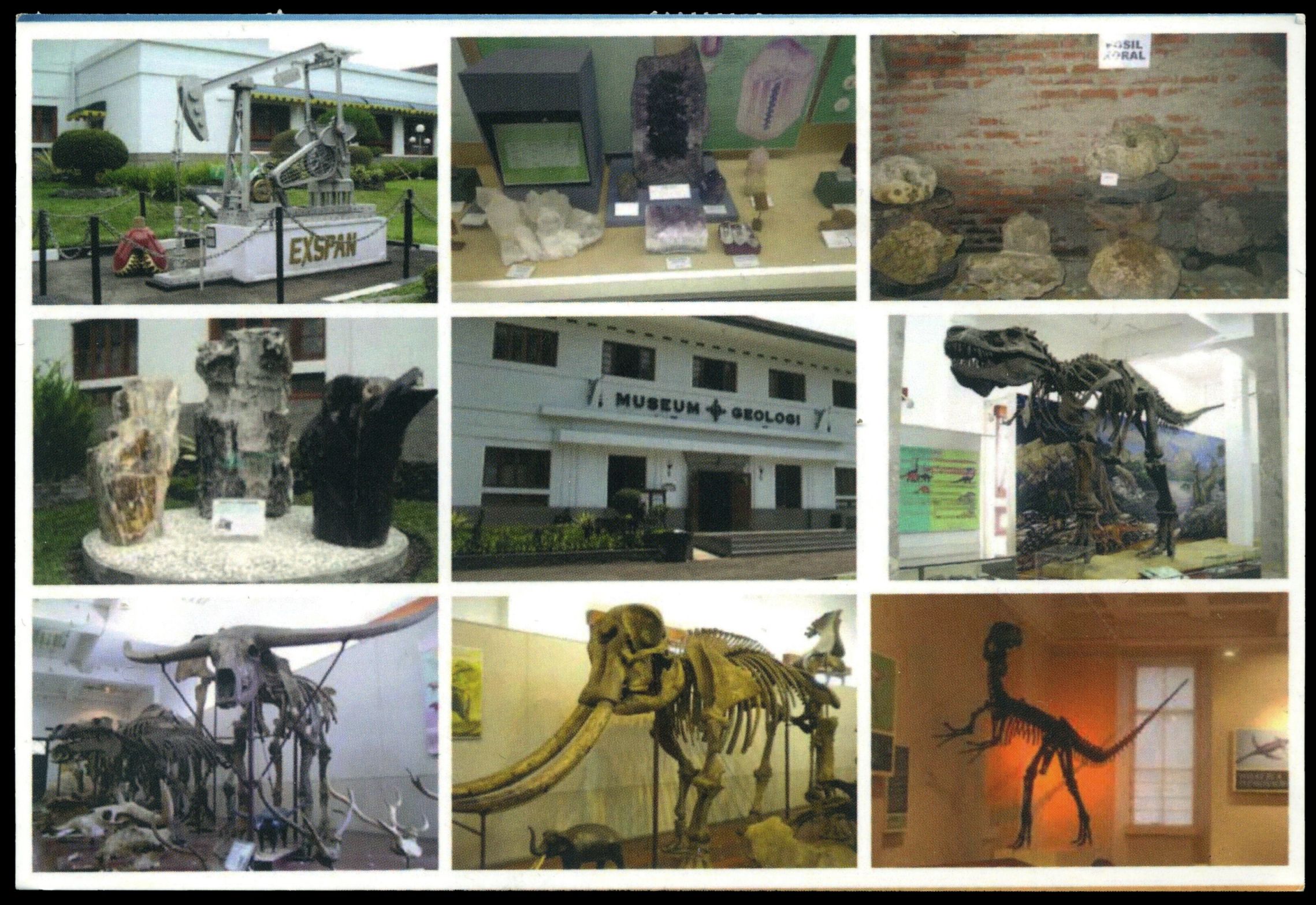
The fossil of a Blora Elephant (Elephas hysudrindicus) stands tall in the middle of the first hall. This male elephant lived 165,000 years ago and died at the age of 49. Its fossils were found in the Blora district in 2009. The discovery of this fossil is extraordinary, since 85% of the fossils remain intact.
"The History of Life" room contain many fossils and replicas. The oldest fossil is Stromatolite from 3.5 billion years ago and Pre-Cambrian Trilobites.
The replica of Tyrannosaurus rex represents animals of the Mesozoic Era.
The ancient mammals from Indonesia, such as elephant (Sinomastodon, Elephas, Stegodon) are on the display in the Cenozoic Era corner.
At the end of the hall there is a room, exhibiting various replicas of ancient skulls, including the famous Java Man (Homo erectus) from Sangiran.
Products and associated philatelic items
| FDC | Mini Sheet | Example of circulated covers |
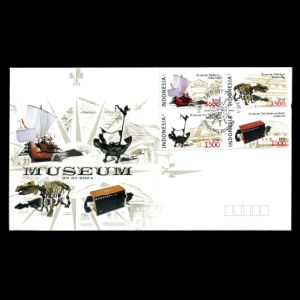 |
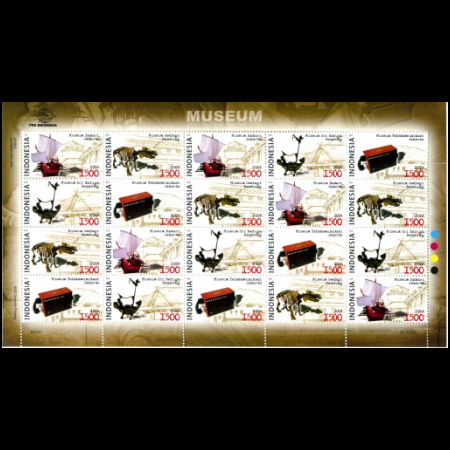 |
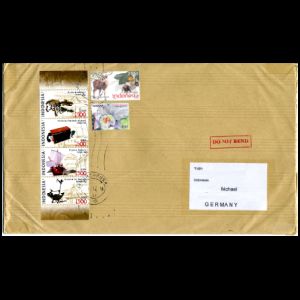 |

|
- Technical details:
Colnect - The Bandung Geology Museum:
Wikipedia, Explore Sunda, Geological Museum Jayers research.
Acknowledgements:
- Many thanks to Dr. Peter Voice from Department of Geological and Environmental Sciences, Western Michigan University, for the draft page review and his valuable comments.
| <prev | back to index | next> |